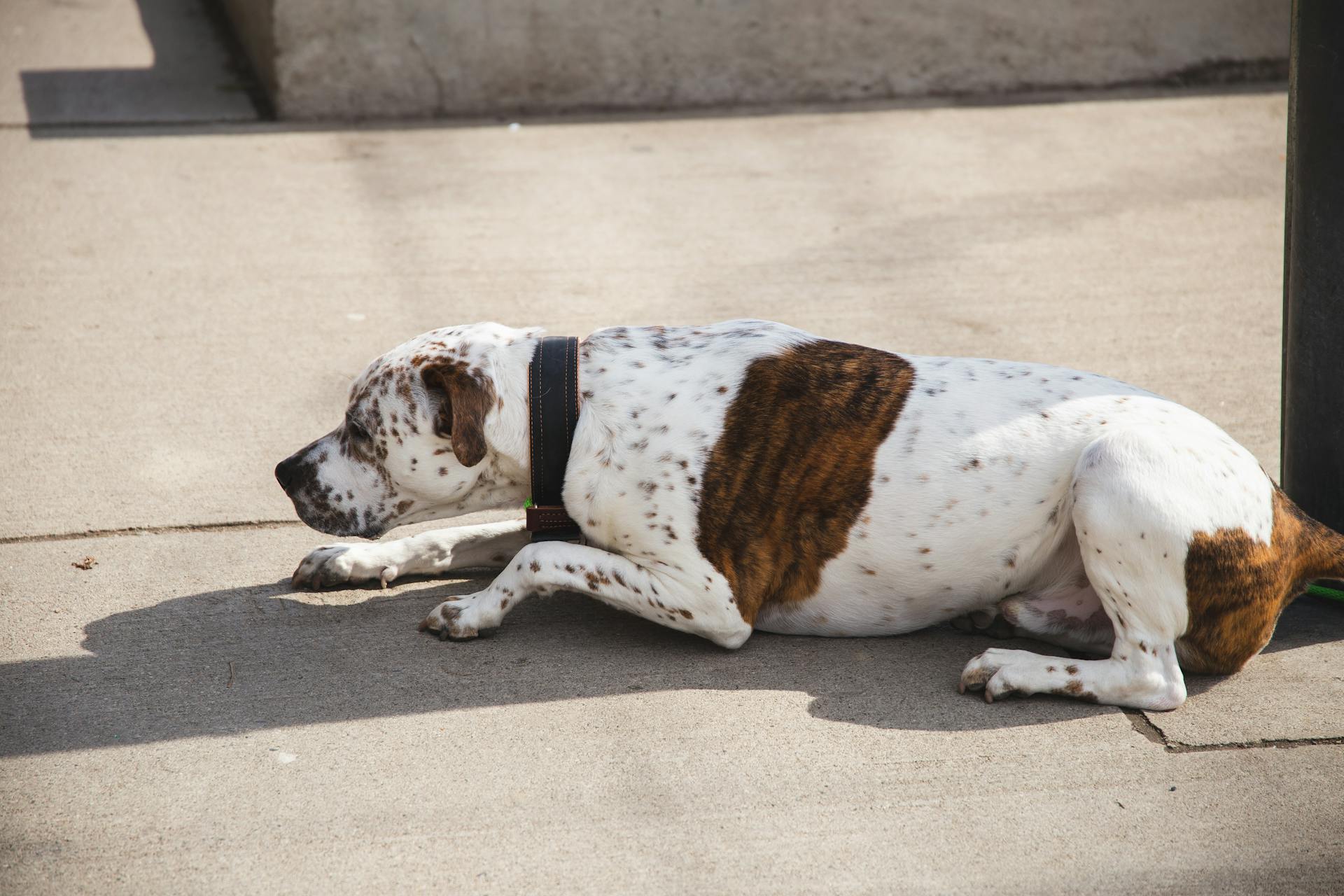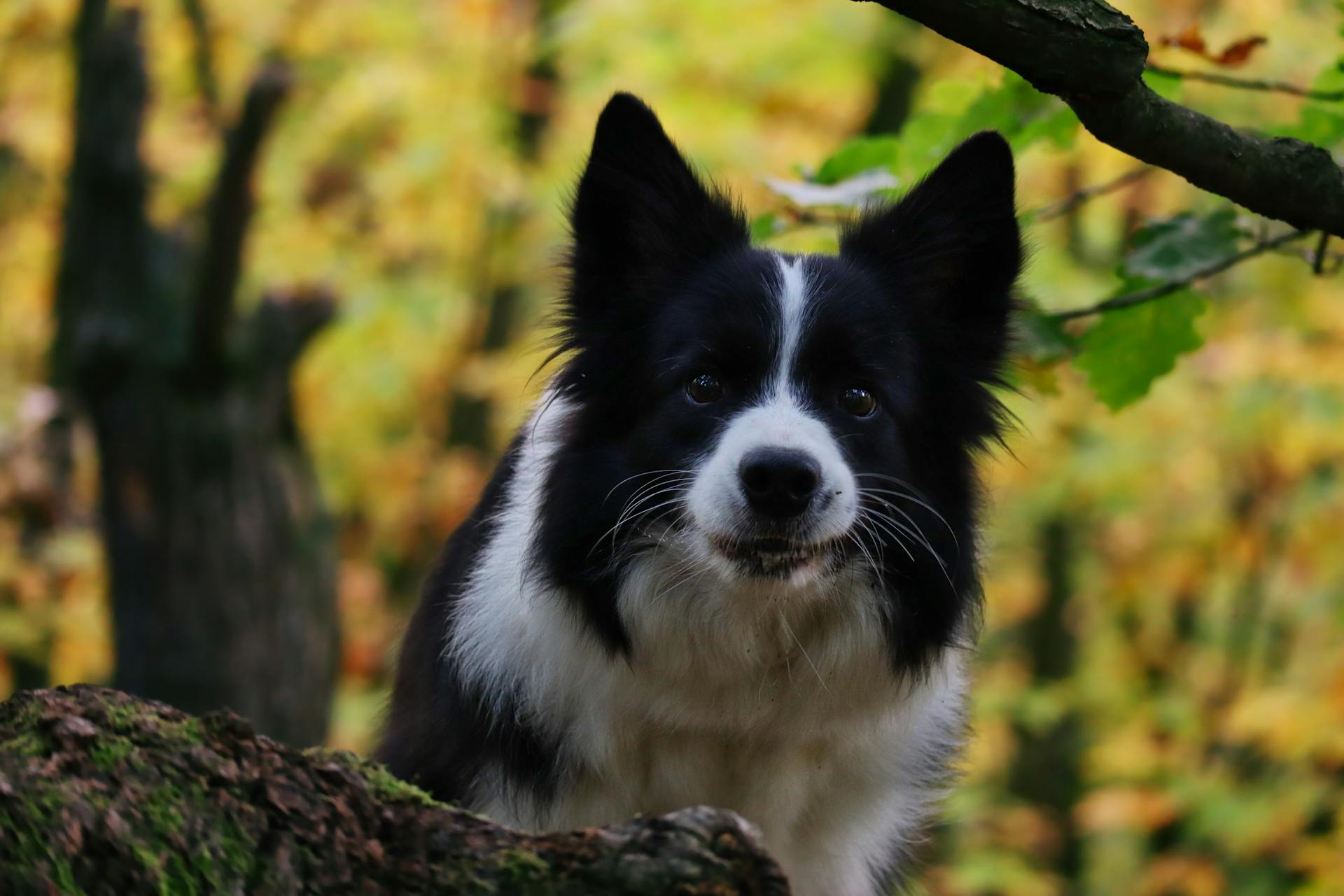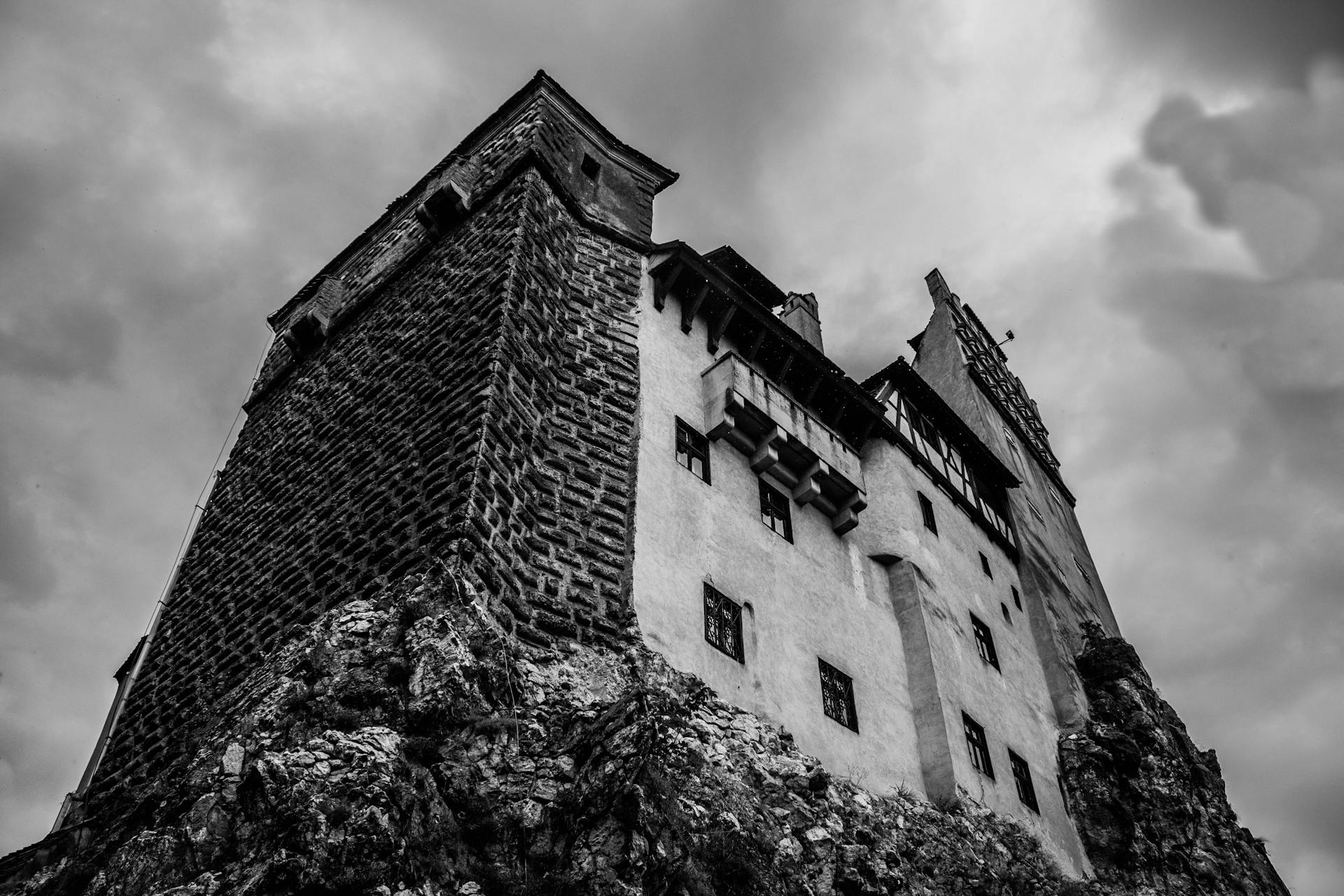
The Transylvanian Hound is a rare and ancient breed, originating from Romania in the 16th century. They were bred to hunt small game such as rabbits and hares.
Their short, smooth coats require minimal grooming, making them a great choice for busy owners. They come in a variety of colors including white, black, and tan.
This breed is known for its friendly and outgoing personality, making them a great addition to families with children.
History
The Transylvanian Hound has a rich history that dates back over 1,000 years.
The breed descends from hounds brought by the Magyars when they crossed the Carpathian Mountains in the ninth century.
In the Middle Ages, the Hungarian aristocracy preferred the Transylvanian Hound as a hunting companion.
Two varieties of the breed developed to hunt different game in different types of terrain, one with tall legs for big game and one with short legs for smaller game.
Consider reading: Game Bred American Pit Bull Terrier
The tall variety was used for hunting woodland and grassland big game, such as European bison, bear, boar, and lynx.
The short variety was used for hunting fox, hare, and chamois in overgrown or rocky terrain.
The breed declined and was nearly extinct by the beginning of the twentieth century.
In 1886, the first official registration of the breed began with the "Hungarian Hunting Dog Pedigree".
The breed was recognised and standardised by the Fédération Cynologique Internationale in 1963.
In 1968, further efforts began to recover the breed.
The Transylvanian Hound is, naturally, recognised by the national dog breeding and fancier group, the Hungarian Kennel Club.
Physical Characteristics
The Transylvanian Hound is a medium-sized dog with a strong and athletic build, able to withstand extreme weather conditions. They have a broad, long chest and a pronounced withers.
Their shoulder blades are long and moderately sloping, which adds to their overall athletic appearance. The topline is straight, and the croup is slightly sloping with a slight tuck-up.
They typically stand between 18 to 25 inches tall at the shoulder, with most weighing between 55 to 77 pounds. Males tend to be slightly bigger than females, although the difference is slight.
Physical Characteristics
The Transylvanian Hound is a medium-sized dog with a sturdy build, perfect for withstanding extreme weather conditions. They have a noble and strong appearance, which is reflected in their athletic body.
Their height is quite impressive, ranging from 18 to 25 inches tall at the shoulder, with males being slightly bigger than females. Most Transylvanian Hounds weigh between 55 to 77 pounds, making them a substantial companion.
The body of a Transylvanian Hound is slightly longer than it is tall, with a broad and long chest that's not too deep. The withers are pronounced, and the topline is straight, giving them a sleek and streamlined appearance.
Their tail is carried curved, but not curled over the back, and is set on at a medium height, reaching slightly beyond the hocks. This unique tail carriage adds to their distinctive and elegant appearance.
A unique perspective: Medium Sheepadoodle
Forequarters
The forequarters of this breed are quite distinctive. The shoulder blades are long, and moderately sloping.
Their build is well-suited for movement, allowing them to cover a lot of ground with ease.
A Short-Legged Variety
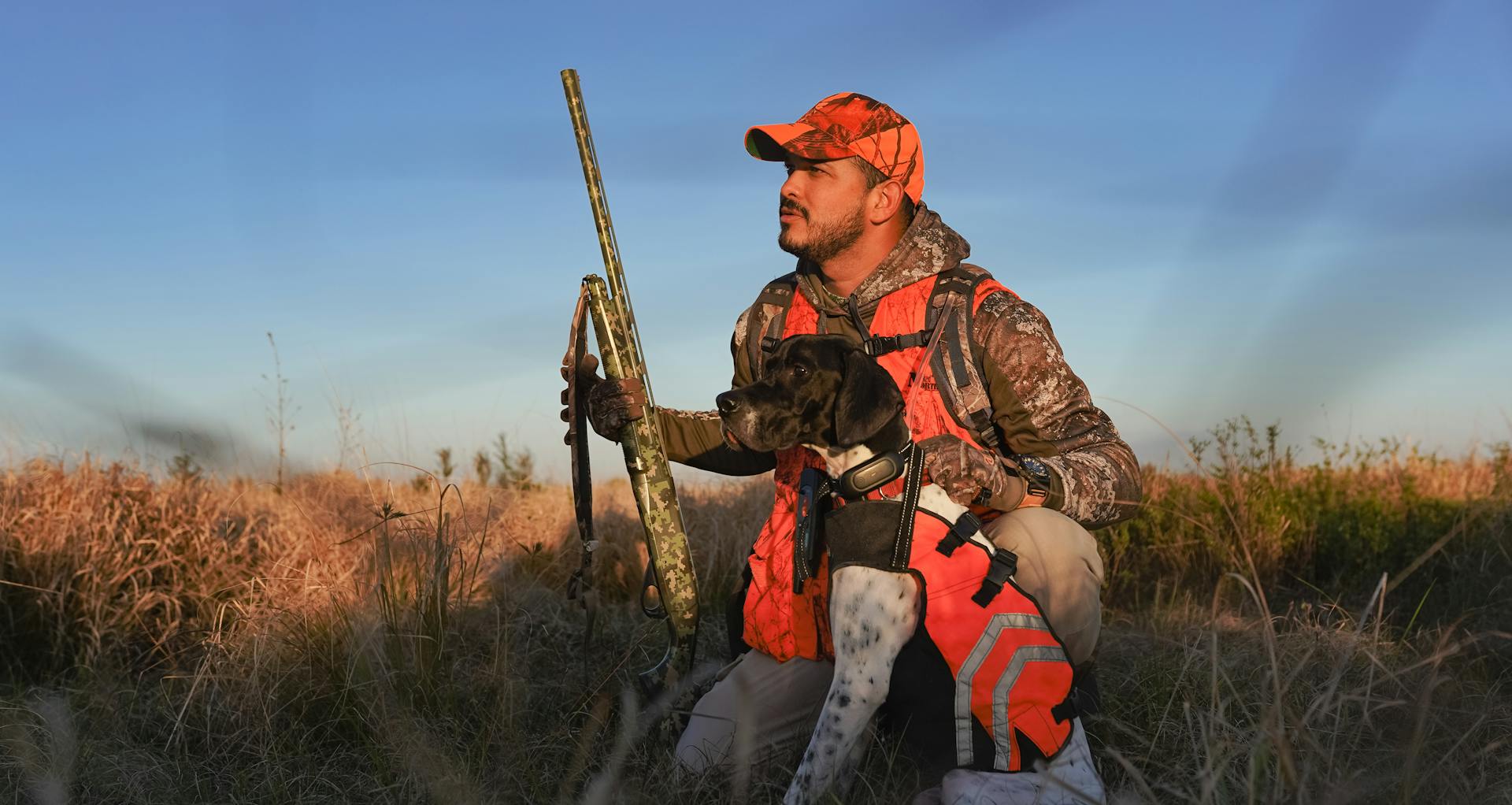
The Transylvanian Hound Dog has undergone changes in its physical characteristics over time. They Once Had a Short-Legged Variety, which didn't survive when the breed almost went extinct at the turn of the 20th century.
Grooming
Grooming a Transylvanian Hound is relatively low maintenance, requiring only a weekly brushing with a strong bristle brush or a grooming mitt.
Their short coat sheds, so be prepared for some extra dog hair around the house. Brushing them once a week will help control shedding, especially during their spring "blow" when they shed their coats.
You'll also need to give them the occasional bath, but the frequency will depend on how dirty they get when playing outside. If they're prone to getting filthy, you may need to bathe them more often.
Daily teeth brushing is essential to maintain good oral hygiene, just like with any dog. Keep an eye on their nails and trim them as needed, as frequent exercise outdoors will help grind them down.
See what others are reading: Shiba Inu 1 Dollar
Traits and Temperament
The Transylvanian Hound is a breed that's all about loyalty and affection. They're naturally good-natured and loving, making them a great fit for families with kids.
These dogs are incredibly active, needing plenty of exercise every day to keep them happy and healthy. They're bred to travel and hunt, so they've got a lot of energy to burn off.
One thing to keep in mind is that Transylvanian Hounds are super social and love attention from their owners. They'll happily engage with anyone who's willing to give them some love and playtime.
As a breed that's used to working closely with humans, Transylvanian Hounds are eager to please and quick to learn. With consistent training and socialization, they can thrive as family pets.
However, it's worth noting that they do require a firm hand and some experience with dog training and caretaking. With the right owner, they can make excellent companions and even guard dogs.
Their adaptability is one of their best traits, making them a great fit for families who love to travel or live in different climates. With the right care and attention, Transylvanian Hounds can be a wonderful addition to any family.
Worth a look: One Eye Shih Tzu
Care and Nutrition
To keep your Transylvanian Hound happy and healthy, it's essential to provide them with high-quality food and regular exercise.
Transylvanian Hounds are active breeds that need at least two good half-hour to hour-long walks per day, along with some active play sessions and shorter walks.
Monitoring their food intake is also crucial, especially as they age, as they can be prone to weight gain.
Your veterinarian is a great resource to help you develop a care routine tailored to your dog's specific needs and age.
You should feed your Transylvanian Hound 3½ to 4½ cups of high-quality kibble or the equivalent in wet food, and adjust their diet as needed based on their individual needs and activity level.
Readers also liked: Shiba Inu Exercise Needs
Care
Regular veterinary checkups are crucial to detect any health concerns early in your Transylvanian Hound.
Your vet can help you develop a care routine that will keep your dog healthy by providing personalized advice.
If your Transylvanian Hound doesn't get enough space to roam or activity, they can be prone to weight gain, so make sure they get at least two good half-hour- to hour-long walks per day.
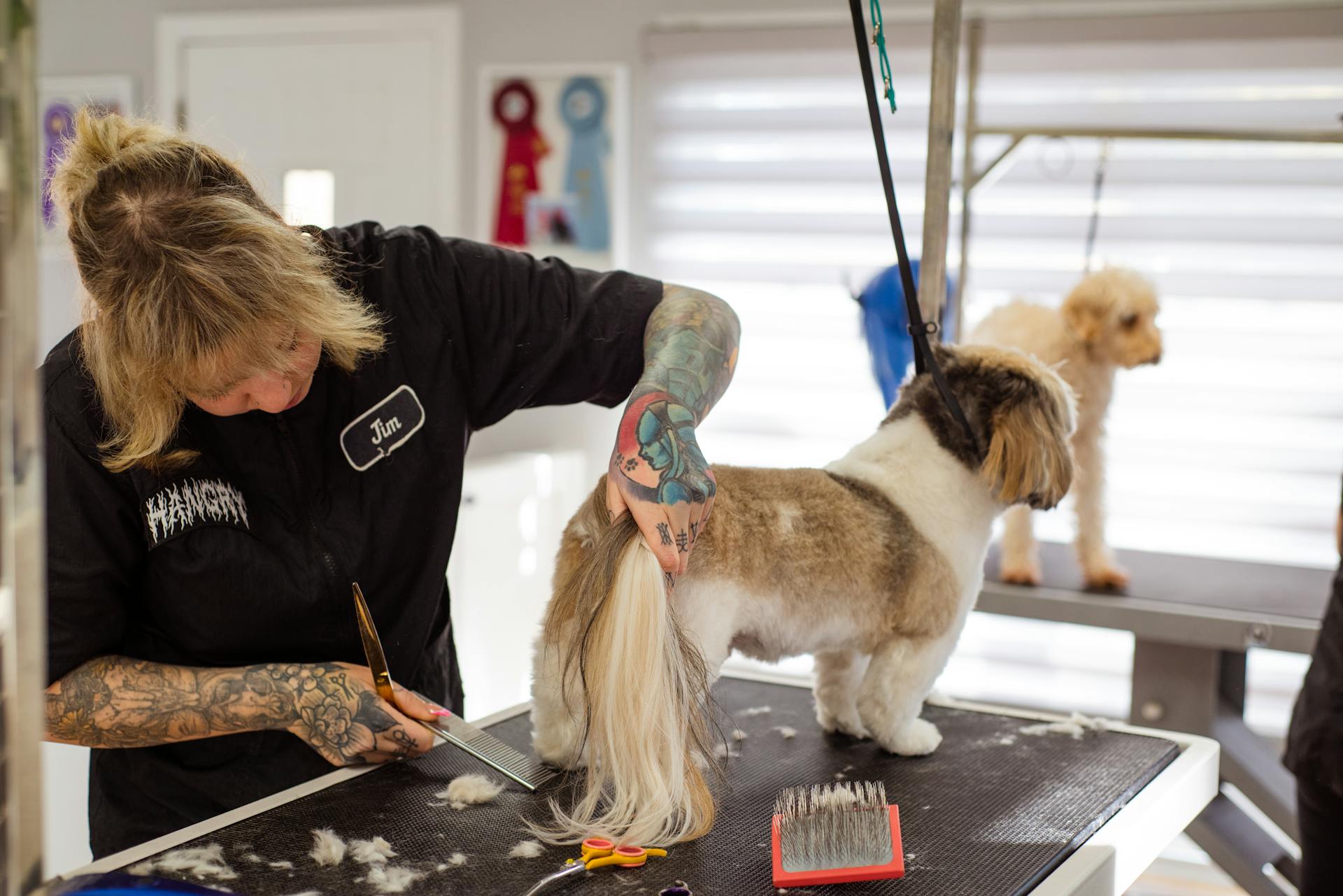
Active play sessions and shorter walks should also be mixed in to keep your dog's energy levels in check.
Daily ear checks are a must to prevent debris and pests from building up, and your vet can show you how to clean them properly.
Trimming your dog's nails before they get too long is essential – usually once or twice a month – to prevent clicking against the floor.
Brushing your Transylvanian Hound's teeth daily is vital to maintain their oral health, and your vet can teach you how to do it properly.
Related reading: How Does a Dog Wag Its Tail
Nutrition Requirements
The Transylvanian Hound is an active breed that does best with high-quality dog food suited to their particular age and any additional health concerns.
As they age, some Transylvanian Hounds are prone to gaining weight, so monitoring their food and treats is crucial.
You should feed your Transylvanian Hound 3½ to 4½ cups of high-quality kibble or the equivalent in wet food daily.
On a similar theme: Canine Teeth Age Chart
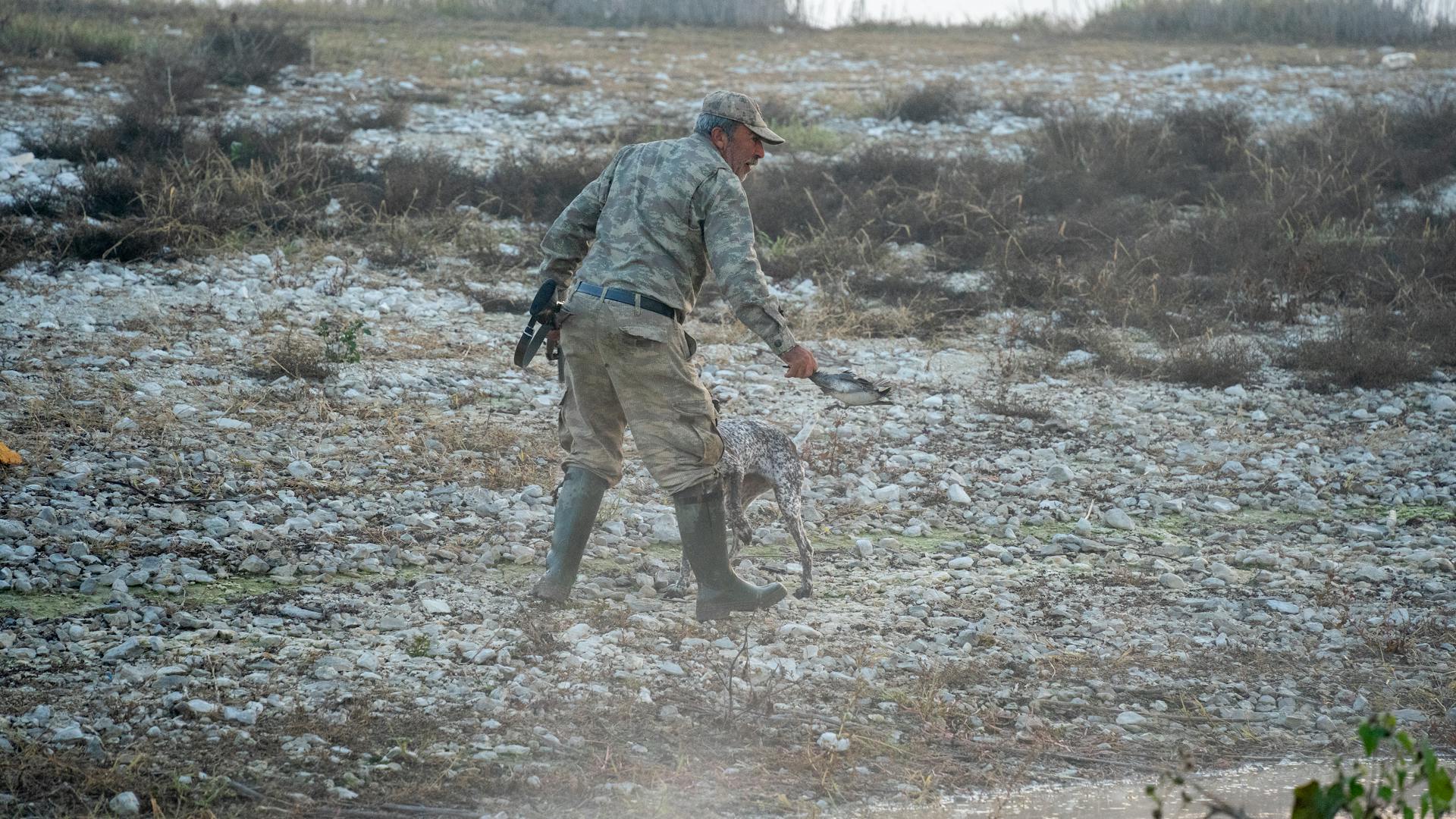
High-quality, protein-dense dog food will provide the energy they need to stay active and healthy.
Following the feeding instructions on the dog food bag is essential, but it's also a good idea to consult with your veterinarian for personalized feeding guidelines.
Transylvanian Hounds tend to gain weight if they don't get enough exercise, so regular physical activity is a must.
Measuring their food and feeding them twice a day rather than leaving food out all the time can help keep them in good shape.
As with all dogs, their dietary needs will change from puppyhood to adulthood and into their senior years, so regular check-ins with your veterinarian are necessary to ensure they're getting the right nutrition.
Discover more: Shiba Inu .01
Frequently Asked Questions
How rare are Transylvanian hounds?
The Transylvanian Hound is a rare dog breed in the United States, with a limited population. Despite being recognized by the United Kennel Club in 2006, it remains a relatively uncommon breed.
How much does a Transylvanian Hound cost?
The cost of a Transylvanian Hound typically starts at $1,000 for a new puppy, depending on factors like pedigree and health. Learn more about the factors that affect the price of this unique breed.
Featured Images: pexels.com

